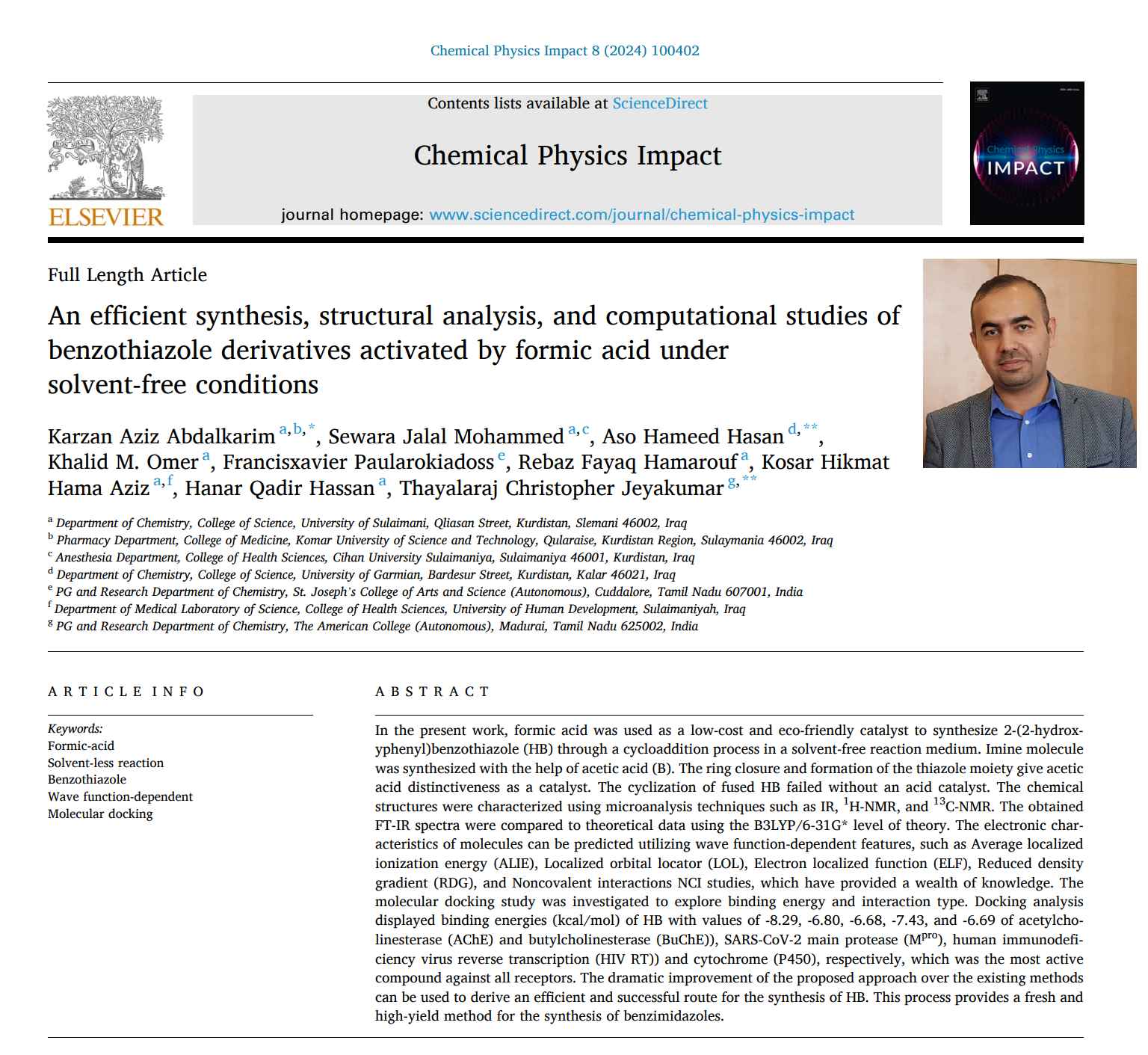
Dr. Sewara J. Mohammed, a lecturer and researcher affiliated with Cihan University Sulaimaniya, has recently authored a groundbreaking research article titled “An efficient synthesis, structural analysis, and computational studies of benzothiazole derivatives activated by formic acid under solvent-free conditions.” This noteworthy contribution has gained recognition from the prestigious international publisher Elsevier, specifically in the esteemed Chemical Physics Impact journal, known for its impressive impact factor of 2.2 and acknowledgment by both Clarivate and Web of Science.
The research focuses on the utilization of formic acid as a cost-effective and environmentally friendly catalyst for synthesizing 2-(2-hydroxyphenyl)benzothiazole (HB) through a solvent-free cycloaddition process. Microanalysis techniques are employed to characterize chemical structures, and theoretical data is presented for comprehensive comparison. Electronic characteristics are predicted using wave function-dependent features, providing valuable insights.
Molecular docking analysis showcases HB’s notable binding energies with various receptors, including acetylcholinesterase (AChE), butylcholinesterase (BuChE), SARS-CoV-2 main protease (Mpro), human immunodeficiency virus reverse transcription (HIV RT), and cytochrome (P450). Notably, HB emerges as the most active compound against all receptors, underscoring its potential therapeutic significance.
This innovative approach signifies a substantial improvement over existing methods, offering an efficient and successful route for HB synthesis. The introduced process presents a novel, high-yield method for benzimidazole synthesis, thereby contributing to the advancement of chemical synthesis techniques.
https://doi.org/10.1016/j.chphi.2023.100402
https://www.sciencedirect.com/science/article/pii/S2667022423002414?via%3Dihub







